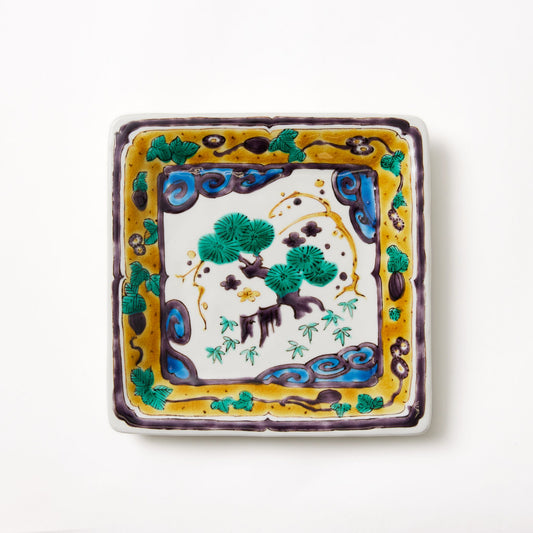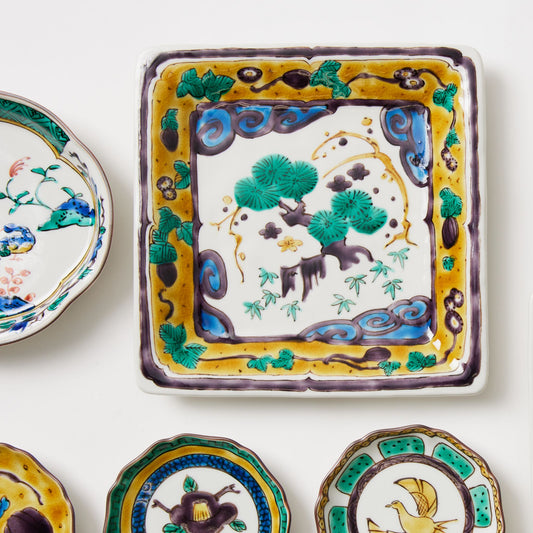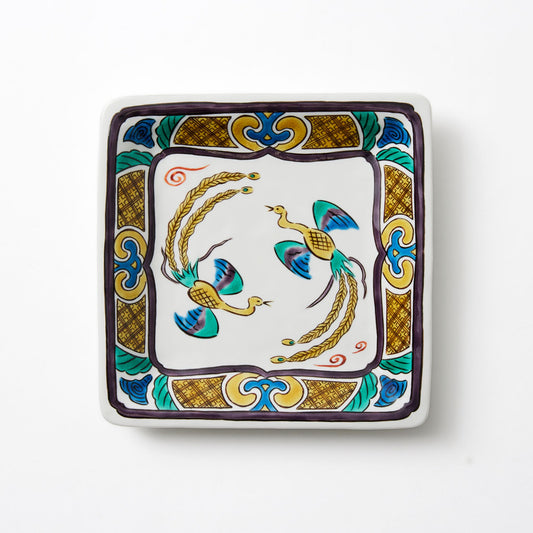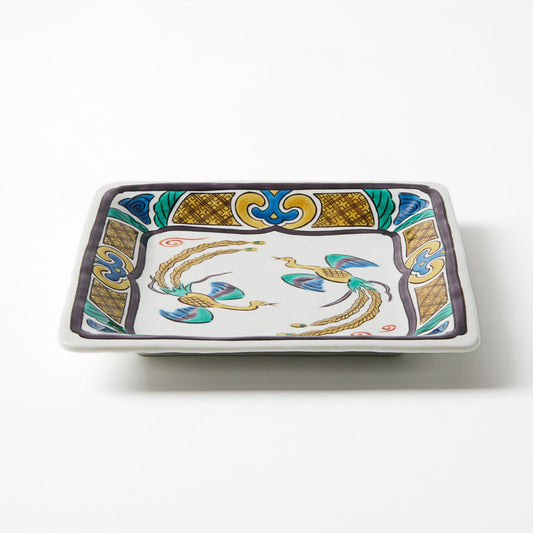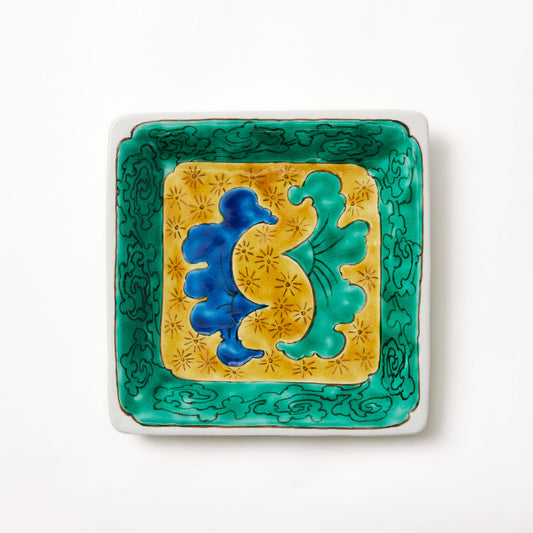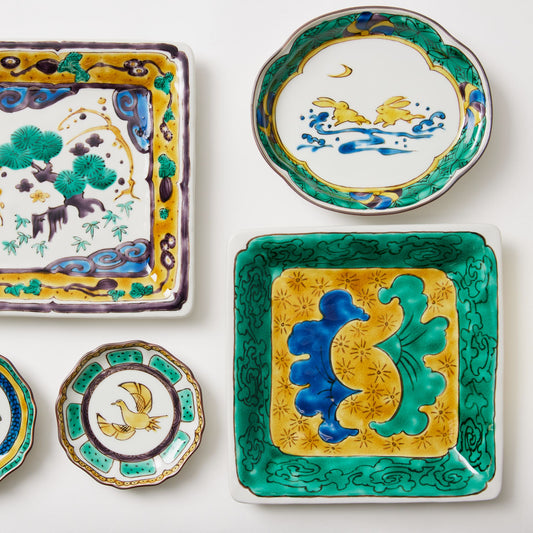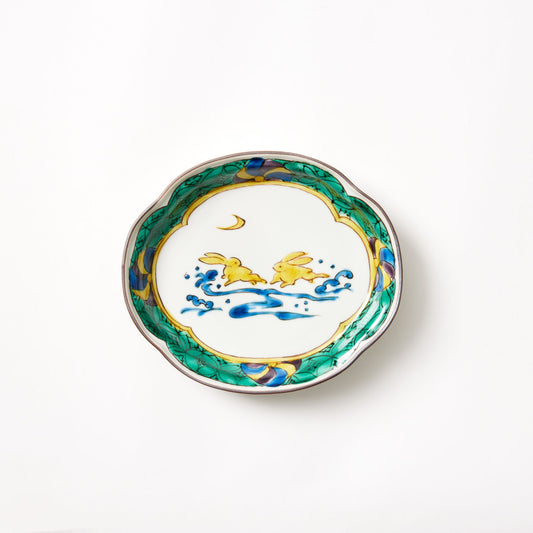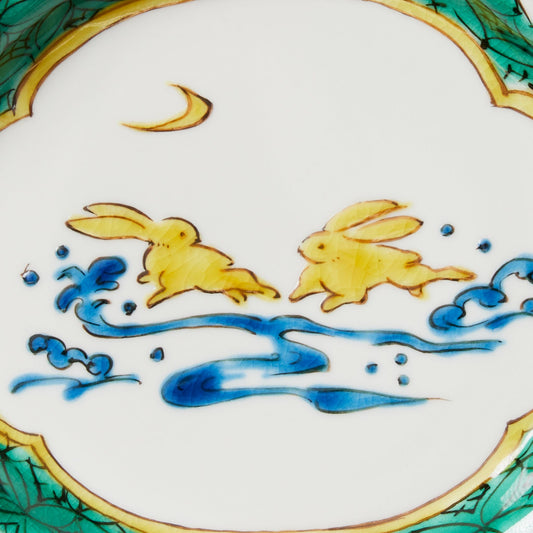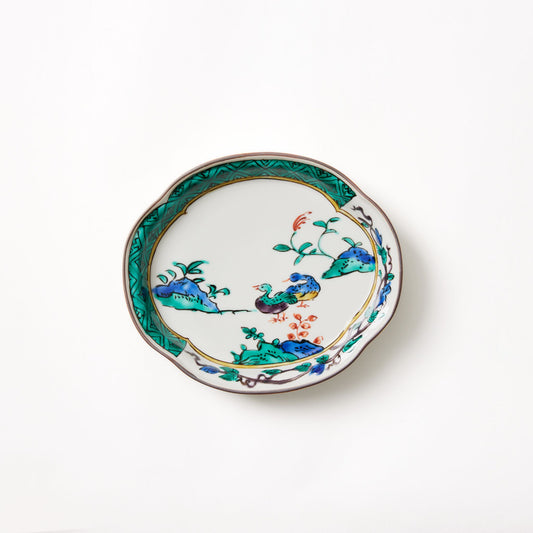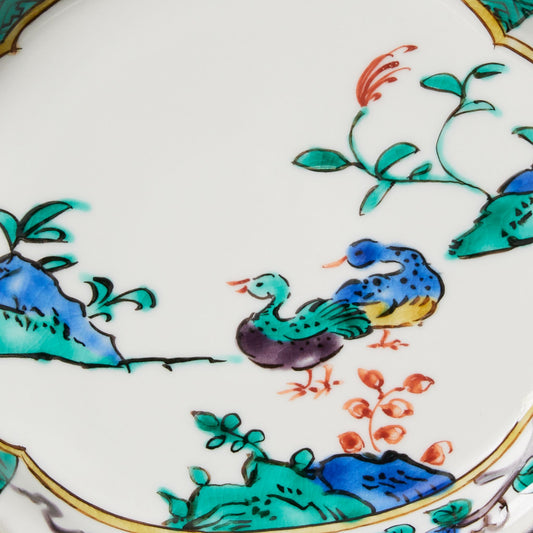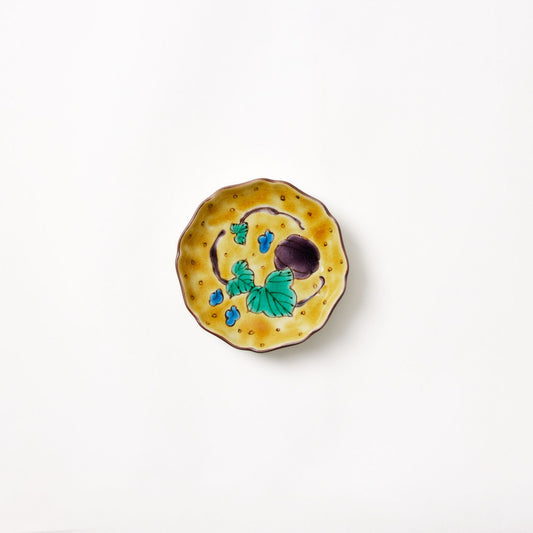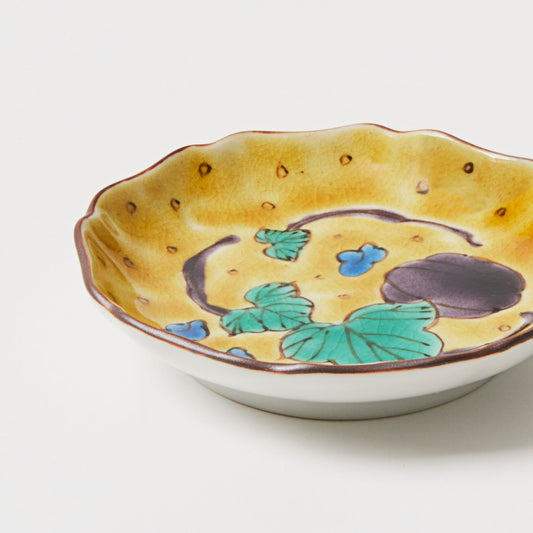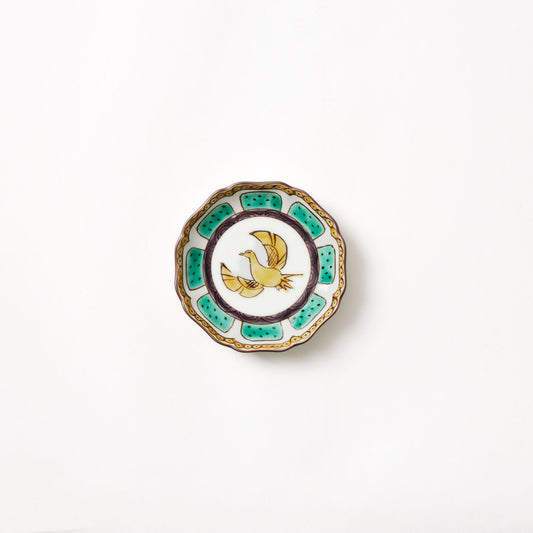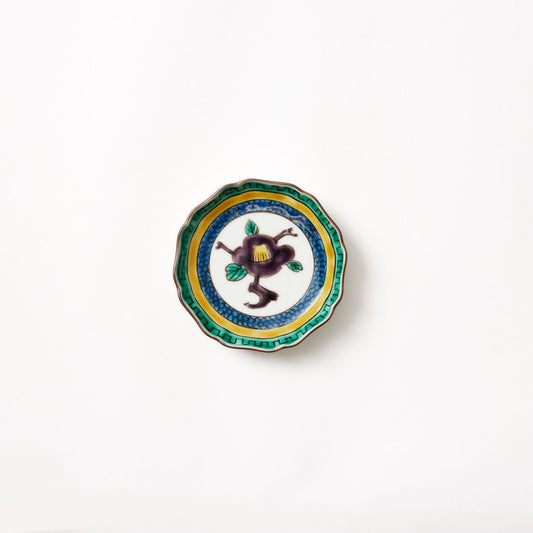Hidden within the scenic Ishikawa Prefecture of Japan lies a captivating tradition that exudes elegance and artistic brilliance – Kutani ware. With a legacy of more than 350 years, Kutani ware is a renowned pottery style originating from the Kaga region in Ishikawa Prefecture. What sets this pottery apart is its use of five vivid colors - green, yellow, red, purple, and navy blue - which are expertly incorporated into intricate and daring patterns. The evolution of Kutani ware over the years is a testament to the unwavering commitment and creativity of those who have upheld its traditional techniques while embracing new ideas. The diverse painting styles and methods of "Japan Kutani" have earned international acclaim for their beauty.
Join us as we embark on an immersive journey, delving into the origins, versatile applications, and timeless allure of Kutani ware, a testament to Japan's enduring legacy of ceramic craftsmanship.
Contents
- History of Kutani Ware
- Characteristics of Kutani Ware
- Decorating with Kutani Ware
- Kutani Ware Production Process Explained
- How to Care for Your Kutani Ware
- OMAKASE Recommendations: Kutani Ware
- In Conclusion
History of Kutani Ware

The story of Kutani ware dates back to the 17th century, during Japan's Edo period. It was in the small village of Kutani, located in present-day Kaga City, that this esteemed ceramic tradition began. Inspired by the discovery of high-quality clay in the region, local artisans embarked on a quest to create pottery of unparalleled beauty and craftsmanship.
During its early years, Kutani ware was characterized by its bold use of colors, including deep blues, greens, yellows, and purples, often adorned with intricate designs featuring auspicious motifs such as dragons, phoenixes, and floral patterns. However, the production of Kutani ware faced numerous challenges over the centuries, including wars, economic hardships, and changes in consumer tastes, leading to periods of decline and revival.
Kutani ware, despite its production coming to a halt in the early 18th century, experienced a revival a century later. This revival was marked by the establishment of numerous kilns that focused on creating their own distinctive styles. The Meiji Period (1868-1912) witnessed the development of the "Kinrande" technique, which involved the application of gold patterns alongside the traditional five colors of painting.
This innovation garnered global recognition and the name "Japan Kutani" became synonymous with this art form. Even today, Kutani ware continues to evolve while maintaining its deep connection with its traditional origins.
Characteristics of Kutani Ware
One of the defining characteristics of Kutani ware is its exquisite hand-painted designs, which often feature intricate details and vibrant colors. Artisans employ various techniques, including overglaze enameling and gold leaf application, to create stunning visual effects that evoke a sense of luxury and refinement.
Kutani ware encompasses a wide range of ceramic objects, including tea sets, vases, plates, and decorative ornaments such as maneki neko, each showcasing the distinct style and craftsmanship of the region. Whether displayed as art pieces or used in daily life, Kutani ware adds a touch of elegance and sophistication to any environment.
Decorating with Kutani Ware

From traditional tea ceremonies to modern home decor, Kutani ware finds versatile applications in both ceremonial and everyday contexts. Tea enthusiasts appreciate the beauty and functionality of Kutani tea sets, which elevate the ritual of tea drinking to an art form.
In addition to tea wares, Kutani vases and decorative objects adorn homes and spaces around the world, serving as timeless symbols of Japanese culture and craftsmanship. Whether displayed as standalone art pieces or incorporated into interior design schemes, Kutani ware adds a touch of sophistication and cultural heritage to any setting.
Kutani Ware Production Process Explained

Crushing Pottery Stone:
The journey begins with the extraction of pottery stone, which is meticulously crushed into a fine powder using specialized equipment. To ensure purity, the powder undergoes a rigorous purification process, where impurities are meticulously removed through careful straining. Once purified, the clay is meticulously kneaded to eliminate air bubbles, resulting in a pristine, workable material ready for shaping.
Shaping the Form:
With the clay prepared, artisans employ various techniques to shape the form, whether by skillfully throwing it onto a potter's wheel, building it from coils, or crafting it from a flat slab. Attention to detail is paramount, with intricate finishes such as trimming, knob-making, and pattern carving enhancing the final product. Following shaping, the piece undergoes thorough drying and biscuit-firing, a crucial step that strengthens the pottery and prepares it for subsequent processes.
Glazing and Glost Firing:
Each Kutani ware piece receives a coating of hakuyu, a translucent glaze that imparts strength and stain resistance upon firing. Precision is key during glaze application, ensuring an even and consistent finish. Subsequently, the pottery is subjected to glost firing at high temperatures, culminating in the formation of a lustrous, glass-like surface that enhances both durability and aesthetic appeal.
Overglaze Decoration:
The pièce de résistance of Kutani ware production lies in its exquisite overglaze decoration, where intricate patterns and vibrant colors breathe life into each piece. Utilizing techniques such as kotsugaki painting and meticulous brushwork, artisans meticulously adorn the pottery with a myriad of designs, each reflecting the rich heritage of Kutani ware. Following decoration, the pottery undergoes a final firing process, where the paint and glaze fuse seamlessly, resulting in resplendent colors and textures.
How to Care for Your Kutani Ware

Each piece of Kutani ware is a unique work of art, requiring gentle care and attention to preserve its beauty for generations to come.
- Handle with Care: Treat your Kutani ware with the utmost care, as each piece is delicately handcrafted and may be susceptible to chipping or breakage.
- Avoid Abrasive Materials: When cleaning, opt for soft cloths or brushes to gently remove dirt and stains, avoiding harsh abrasives that could damage the delicate glaze.
- Hand Wash Only: To maintain the integrity of the glaze and intricate decorations, hand wash your Kutani ware with mild detergent and lukewarm water, avoiding harsh dishwasher cycles.
- Avoid Extreme Temperatures: Kutani ware is sensitive to extreme temperatures, so avoid sudden temperature changes to prevent cracking or warping.
- Display with Pride: Showcase your Kutani ware in a well-lit, dust-free environment, allowing its vibrant colors and intricate details to shine.
- Rotate and Inspect Regularly: To ensure even exposure to light and minimize the risk of damage, rotate your Kutani ware periodically and inspect for any signs of wear or damage.
By following these simple tips, you can enjoy your Kutani ware for years to come, preserving its beauty and legacy as a timeless piece of Japanese artistry. As you incorporate Kutani ware into your home, remember that each piece carries a unique story and a connection to Japan's rich cultural heritage.
OMAKASE Recommendations: Kutani Ware
The allure of Kutani Ware lies in its stunning artwork. The intricate and colorful designs of Kutani Ware, a true representation of Japanese culture, will infuse vibrancy into any dining experience. Beyond its functionality, Kutani Ware can be displayed as a decorative piece on a plate stand, enhancing the aesthetics of your home. Hand-crafted by talented artisans, Kutani Ware pieces make for meaningful and elegant gifts.
Here are some of our recommendations available here on omakase, or you can check out our full collection here:
Seikou Kiln Jidai Kutani Square Plate Set
Seikou Kiln's masterful craftsmanship shines through in this stunning Jidai Kutani-ware Square Plate Set, showcasing the perfect fusion of contemporary artistry and timeless skill. Adorned with captivating modern paintings, these square plates effortlessly elevate any space with a touch of sophistication. Whether utilized for serving or as decorative pieces, each meticulously handcrafted plate from Japan embodies the renowned quality and artistry synonymous with Kutani porcelain.
Kutani Rabbit Petal Rimmed Plate
This Kutani Bitouen Rabbit Petal Rimmed plate from Kutani Bitouen beautifully combines the charm of traditional Japanese artistry with a modern design. With its vibrant colors and adorable rabbit motifs, it effortlessly adds a touch of playfulness to your dining experience. The petal-rimmed edges not only give the plate a unique texture but also pay homage to the timeless craftsmanship of Japan.
Seikou Kiln Jidai Kutani Youraku Patterned Plate Set
These Jidai Kutani Youraku Patterned Kutani-ware plates from Seikou Kiln are adorned with distinct designs inspired by traditional Japanese motifs, meticulously handcrafted to perfection. Manufactured in Japan with the highest quality standards, these plates add an elegant touch to any table setting or home decor.
Pine, Bamboo, and Plum Patterned Square Plate
This Kutani Bitouen Square plate showcases the harmonious fusion of traditional Japanese artistry and modern design. With its meticulous craftsmanship and intricate patterns, it effortlessly embodies the essence of good fortune in Japanese culture. The symbolic representation of pine, bamboo, and plum, also known as the "Three Friends of Winter" or "Shōchikubai," signifies longevity, resilience, and unwavering strength.
In Conclusion
Kutani ware stands as a testament to Japan's rich ceramic heritage, blending centuries-old traditions with timeless elegance and artistry. From its humble beginnings in the village of Kutani to its enduring legacy on the world stage, Kutani ware continues to captivate and inspire enthusiasts worldwide. Whether admired for its intricate designs, vibrant colors, or cultural significance, Kutani ware remains a cherished symbol of Japanese craftsmanship and ingenuity.
As we celebrate the legacy of Kutani ware, let us honor the artisans whose skill and dedication have preserved this cherished tradition for centuries, ensuring that its beauty and craftsmanship continue to enrich our lives for generations to come.







